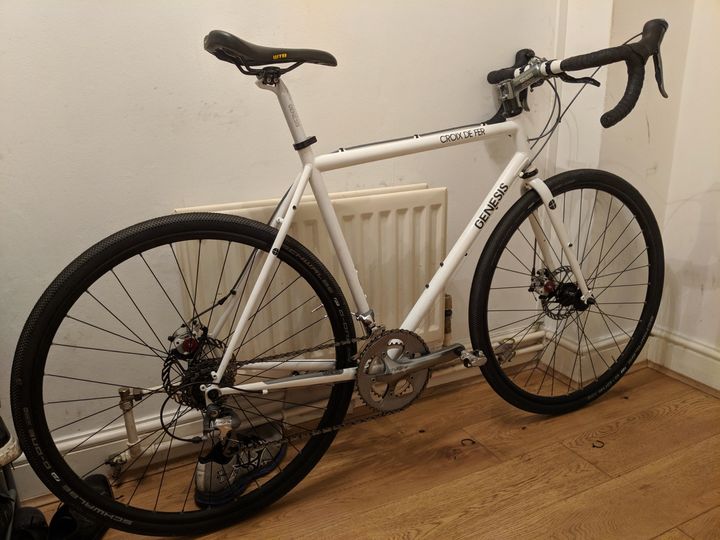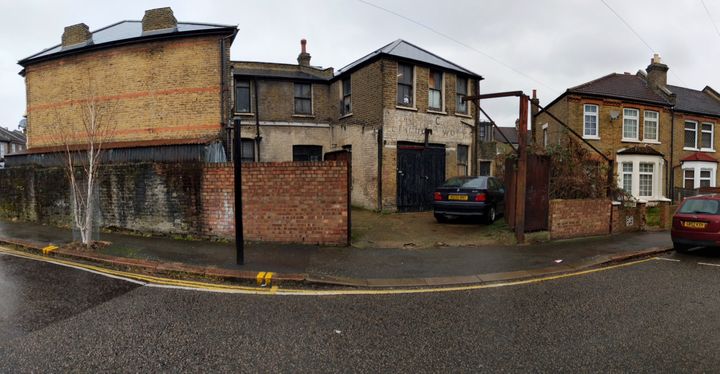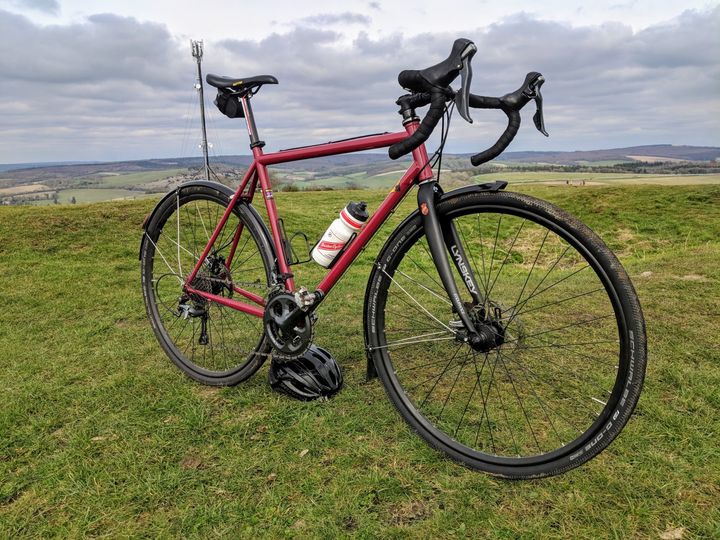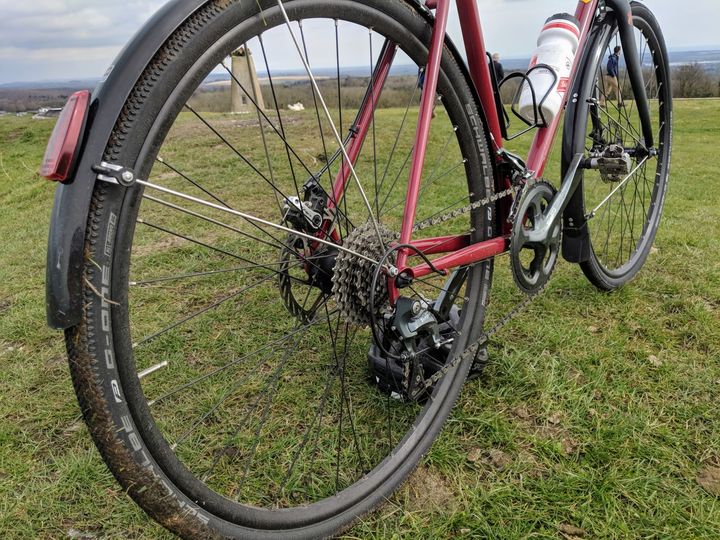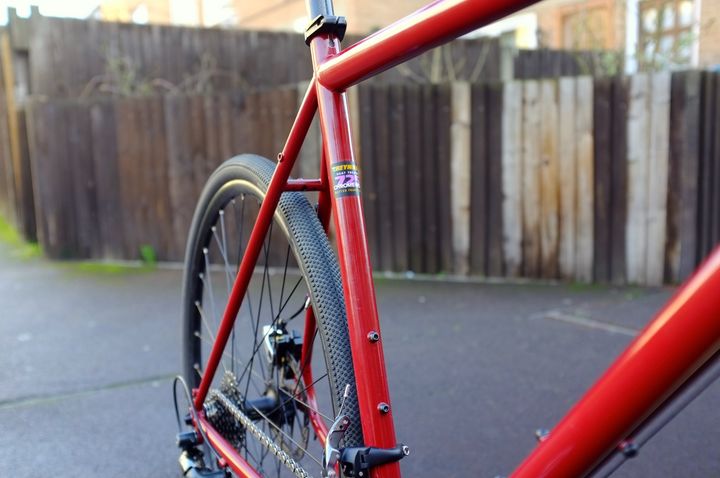04 April, 2018
The New Ride
Since finishing my masters programme 8 months ago, it's been a rollercoaster ride. In September 2017 I stood a newly belettered man (BA MSc.), footloose, free and filled with dreams of new careers, eager to return to civilisation from my monastic experience as a Masters student.
As it turns out, since the end of my year in the figurative monastery (a year spent dedicated to quiet study, voluntary (?) abstinence from carnal pleasures and doing a lot of this), really all that's happened is that I've migrated from being an unemployed, single man to a slightly older, soon to be unemployed, single man. Now this isn't all bad. One of the upsides of being single is that there's no one to complain about the bike parts that litter your bedroom or ask you ridiculous questions like "Don't you have enough bikes?" or "Surely you've got better things to do with your time than build a new bike?".
Given the opportunity then, I thought I'd not only go ahead and buy another bike but also detail some of the build decisions I've made as part of this inaugural (and knowing my sticking power, probably final) blog post!
The Build
I'd been thinking about doing some bike touring for a long time. I had lots of fun at the Dunwich Dynamo with some friends during summer 2017 and I'd set myself a goal of doing some real touring in 2018 (The Dynamo is an unofficial mini-Audax event starting in London and finishing, unsurprisingly, in Dunwich. Riding in to the sunrise through the rolling Suffolk countryside after a cold and tiring night is something that I would recommend to everyone and the whole event is just great). Realising immediately that this was a great opportunity to build a new bike, I quickly set to work finding a Genesis Croix de Fer after reading rave reviews from owners on the internet praising the steel construction and versatile geometry.
Back in February I took delivery of a secondhand 2012 CdF, size medium, colour white. The previous owner was clearly sad to see her go and mentioned that whilst he was disappointed with the final sales price on eBay, he was happy to honour the deal. Given that I was going to replace a lot of the components, I wasn't too fussy about the spec, all I wanted was a Reynolds 725 frame (since changed to a lesser tubeset on the newer models I believe) in good condition.
I picked the bike up for around £400 with a plan to turn her in to the perfect tourer/commuter. I immediately stripped the frame down and spent a rainy Saturday morning taking the frame down to Hither Green to visit Mario Vaz at his suburban workshop.
I requested a deep red gloss powdercoat and returned a week later to collect the frame and finish the build. It sounds so simple but at that point I hadn't really realised just how much time, effort and expense was going to be involved with turning the bare frame in to a finished bike. I've built track bikes before but this was my first road build and it took ages, especially as I was waiting to buy cheap second hand parts.
A (also very rainy) visit to London Bike Kitchen sorted out the new bottom bracket (Ultegra threaded) and headset bearing cups (FSA), guided by the watchful eye and wise words of Ellie, the extremely knowledgeable and generally badass LBK staffer who I believe also runs a similar setup in Oxford. As an aside to this article I can't recommend LBK enough and if you love cycling but are put off by bike maintenance then it's a fantastic institution offering the chance to empower yourself through knowledge and maintenance skills!
One of my objectives for this build was to make as much use as I could of second-hand parts and stuff I had lying around. Given that a similar spec CdF currently costs a cool £1300 on the Genesis site, I wanted to spend no more than half that on mine. A reasonable target given that I already had a complete groupset ready to be installed.
Groupset and Finishing Kit
I'd recently upgraded the Tiagra 4700 groupset on my summer bike and was looking for a project bike to put it on. I was able to reuse the shifters and crankset but ended up needing a new front mech (~£10 new on ebay, to match the narrower seat tube) and long cage rear mech (~£13 on ebay, to accommodate the huge 11-34 cassette that I need to compensate for my lack of climbing ability). I've spent a few thousand miles with the 4700 group and whilst yes, it isn't quite as slick as the new Ultegra on the summer bike, it's reliable, cheap to replace and more than good enough for this build (as well as looking great on the red frame).
I found a carbon FSA seatpost on ebay (~£14 iirc), again to maximise comfort and look pretty.
For Forks Sake
I knew I wanted a carbon fork for maximum comfort and to slightly offset the substantial weight of the frame. This was a challenge as Genesis original forks are hard to find and very expensive. I spent a long time searching for an alternative that:
- Has a straight 1 1/8" steerer
- Has enough clearance for big tyres and mudguards
- Has disc mounts
- Isn't really expensive
As it turns out, the Lynskey Endurance is a perfect replacement and I was fortunate enough to find a brand new one for £80 on Gumtree. I recently saw a CdF with the original Genesis carbon fork locked up in Vauxhall and on inspection, it appears that both the Genesis and Lynskey forks come from the same mould, the only difference being the additional mounting bolts on the outside face of the fork blade.
Brakes
The bike came with a set of Avid BB7 calipers which I think I remember being specced on MTBs when I was a kid! I had a pair of TRP Spyre calipers in my cupboard (which I use in flatmount form on my summer bike) and at half the weight with a double-sided pull I was keen to switch. I'm a big fan of the hydraulics on my MTB but given my budget restrictions, cable discs were the only option. I considered going hybrid and getting a pair of Hy/RDs or even the lesser known (and exotic sounding) Juin Tech R1s but given that this is meant to be a "ride anywhere" build, the reliability of mechanicals won me over. Low compression Jagwire housing does a decent job of transmitting force to the rotors, even if it's not quite as good as the excellent non-compression housing on the summer bike.
Accessories
A set of SKS Chromoplastics were fitted on account of their reputation as go-to mudguards and after a long and convoluted fitting process (probably my fault, not SKS's), they've been great. They keep you dry, don't rattle, feel bulletproof and look the part.
Although I'd been advised that Tubus tubular steel racks are the last word when it comes to pannier racks, budget meant I had to settle for a tubular aluminium Topeak Super Tourist DX. I was worried that there would be interference problems given that this frame has an externally mounted rear brake caliper but as it turns out, the Spyres are so compact that the (lighter, prettier and presumably sturdier) non-disc specific rack fits without a problem. This wouldn't have been possible with the bulky BB7 calipers and the following photo shows just how snug the fit is with the Spyres!
And Finally, The Finished Article. Meet Elaine.
This bike wasn't built for speed but instead to be a sturdy hauler, able to go anywhere and do anything. She looks great and so far she seems to ride really well. Not the lightest bike around but really comfortable and nimble enough to keep it interesting. Including the respray I ended up spending around £700 but once I've sold some of the old components, the net cost should be <£600. More pics below.
